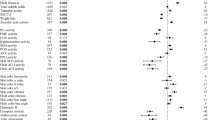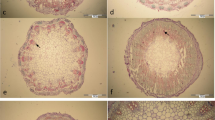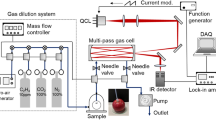Abstract
THE finding that the reduction of the life of carnations (that is, the time interval between cutting and first appearance of petal wilt) which results from exposure to 0.05 p.p.m. ethylene is completely counteracted by the addition of 5 per cent carbon dioxide to the atmosphere1 raises the question of what is the threshold concentration of carbon dioxide for achieving the effect.
This is a preview of subscription content, access via your institution
Access options
Subscribe to this journal
Receive 51 print issues and online access
$199.00 per year
only $3.90 per issue
Buy this article
- Purchase on Springer Link
- Instant access to full article PDF
Prices may be subject to local taxes which are calculated during checkout
Similar content being viewed by others

References
Smith, W. H., Parker, J. C., and Freeman, W. W., preceding communication.
Smith, W. H., Meigh, D. F., and Parker, J. C., Nature, 204, 92 (1964).
Meigh, D. F., Nature, 196, 345 (1962).
Author information
Authors and Affiliations
Rights and permissions
About this article
Cite this article
SMITH, W., PARKER, J. Prevention of Ethylene Injury to Carnations by Low Concentrations of Carbon Dioxide. Nature 211, 100–101 (1966). https://doi.org/10.1038/211100a0
Issue Date:
DOI: https://doi.org/10.1038/211100a0
Comments
By submitting a comment you agree to abide by our Terms and Community Guidelines. If you find something abusive or that does not comply with our terms or guidelines please flag it as inappropriate.


